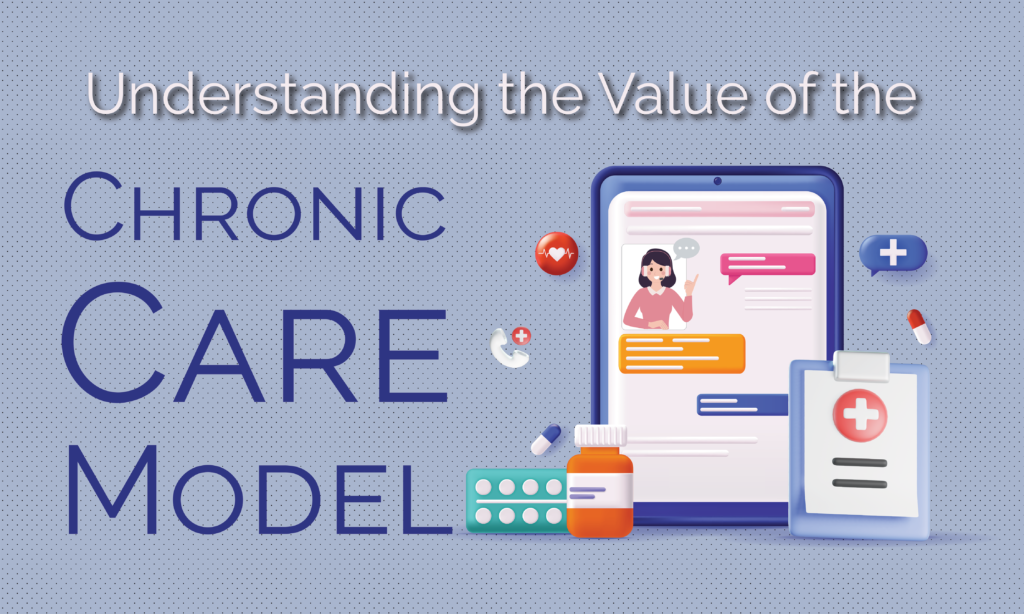Treatment for issues related to chronic diseases like COPD, stroke, cancer, and diabetes are among the most costly and yet preventable health problems in the U.S. More than half of the chronically ill Americans do not receive good chronic care, and those without insurance are faring the worst. Hence, the rising healthcare costs can be attributed to fragmented chronic disease care.
To resolve this growing chronic disease problem, researchers have developed comprehensive strategies for managing chronic conditions and delivering a better quality of care. The primary aim of these programs is to resolve the fragmentation and improve health outcomes at a cost that will not burden the healthcare system or the patient. Many of the existing chronic disease management strategies were first developed by MacColl Institute for Healthcare Innovation at Group Health Cooperative, more popularly known as the Wagner Chronic Care Model. The Wagner CCM is designed to bridge the gap and align care programs and services to provide better care to patients with chronic conditions.
So what is the Chronic Care Model?
The Chronic Care Model provides a visual guide for a comprehensive and integrated restructuring of care delivery with the goal of improving patient health outcomes. It is assumed that improving chronic care calls for a comprehensive strategy that integrates interventions by the patient and provider as well as at a system level.
Patients take on a central role with emphasis on their long-term health goals, needs, and capabilities when it comes to self-managing their care. Their relationship with their primary care provider and the practice care team is aligned to achieve optimal results. Instead of physicians reacting to the acute care needs of their patients, they take on a more proactive approach to keep a population of patients engaged to manage their conditions. The Chronic Care Model shifts the burden of care from the physician with specialized knowledge to all members of the care team including the patients who can also offer their own expertise in the overall care management.
The Elements of the Chronic Care Model
Looking specifically into its application in the practice, the Chronic Care Model requires the integration of the following six essential elements to provide optimal chronic care to patients:
1. Organizational support
This looks into the culture and system leadership of the practice with the goal of optimally managing chronic conditions and improving practices, particularly on the role of practice leaders to make quality a priority.
2. Clinical information systems
These are used to put structure in organizing patient, population, and clinician data to determine patient health status and facilitate effective and efficient patient care. CIS needs to provide information about every patient like their physiological parameters and data on patient populations like a disease registry.
3. Delivery system design
It addresses the composition and roles of the practice team, their visits, and follow-up care. All team members must be visible to the patient and that there is always communication, coordination, and collaboration within the team. Patients should be able to see the presence of the team as a means to deliver care instead of as a substitute for a primary care provider.
4. Decision support
Provides care that is evidence-based and considerate of patient preferences. It includes mechanisms to improve provider access to evidence-based practice guidelines and closely collaborate with specialists.
5. Self-management support
Enable, capacitate, and prepare patients in managing their own health and care keeping in mind their health goals. These patient-centered interventions include education support, skills training, psychosocial guidance, and close collaboration between a provider and the patient regarding the management of their care.
6. Community resources
Mobilize community resources that meet the needs of the patients, who should be encouraged to join in community programs. This could mean partnerships, linkages, and advocacies to improve patient care, particularly filling in the gaps in needed services.
The first four elements are meant for practice strategies while the last two are patient-centered concepts. Both chronic disease management and practice improvement can either use each of the elements separately or take everything as a whole. When these elements are used separately, the provider must still keep in mind the other elements of the Chronic Care Model.
The goal of the Chronic Care Model is to provide a better quality of care that could positively impact patient outcomes by focusing on the individual practice’s interaction with their patients. It has been used in a variety of settings for many years. Providers have faced barriers to its adoption with cost and staffing as the most prevalent. However, studies suggest that it is effective in managing chronic care and effecting improvement on practice workflows.
The Value of the Chronic Care Model
Other than improving patients’ health, the Chronic Care Model brings financial and operational benefits.
- Improves efficiency in the practice for it streamlines workflows and processes.
- It maximizes staff productivity and reduces burnout.
- It enhances staff satisfaction and retention, which saves the practice money on hiring and training.
- It improves patient satisfaction and prevents patient leakage, which is good for the business.
- It enables practices to earn through pay-for-performance and quality improvement incentives and grants.
The Chronic Care Model is evolving as a crucial strategic framework for the healthcare community to innovate. Innovative interventions that have been inspired by the model have the potential to address the ongoing chronic disease crisis.
Chronic Care Management and the Chronic Care Model
One such care model that is rooted in the Wagner CCM is the Chronic Care Management which was introduced in 2015 by the Center for Medicare and Medicaid Services (CMS). Medicare CCM is a care coordination service provided to patients with multiple chronic conditions in-between regular office visits. It implements many of the salient aspects of the Wagner CCM framework. Medicare CCM is a crucial piece in the overarching strategy of improving chronic care and helping providers overcome the barriers that will help them optimize patient care and outcomes.
Medicare offers providers monthly reimbursements for their chronic care management and non-face-to-face services. It enables primary care providers to receive payments for the care they have been providing but were not billing for in the past. Medicare has just created a path for improved chronic care with a clear and effective framework that also brings in additional revenues to the practice.
However, many primary care providers have struggled to start their own programs because of the capital investment and possible disruption to their practice. For many practices, starting a new CCM service on their own will not have a positive cash flow until the second year which is unattractive to most. This leaves the practice’s eligible chronic care patients missing out on a vital service that could benefit their health and prevent further worsening of their chronic condition. Ascent Care Partners (ACP) offers the answer with its turnkey Chronic Care Management program at no upfront cost or risk. With ACP, the practice has positive cash flow from the first month.
ACP is a virtual healthcare service provider with the goal to help primary care physician practices realize deserved income with no increased overhead. Along with our turnkey Remote Patient Monitoring (RPM) program that brings in additional billable services, you can optimize your patient care and see your practice grow financially.



